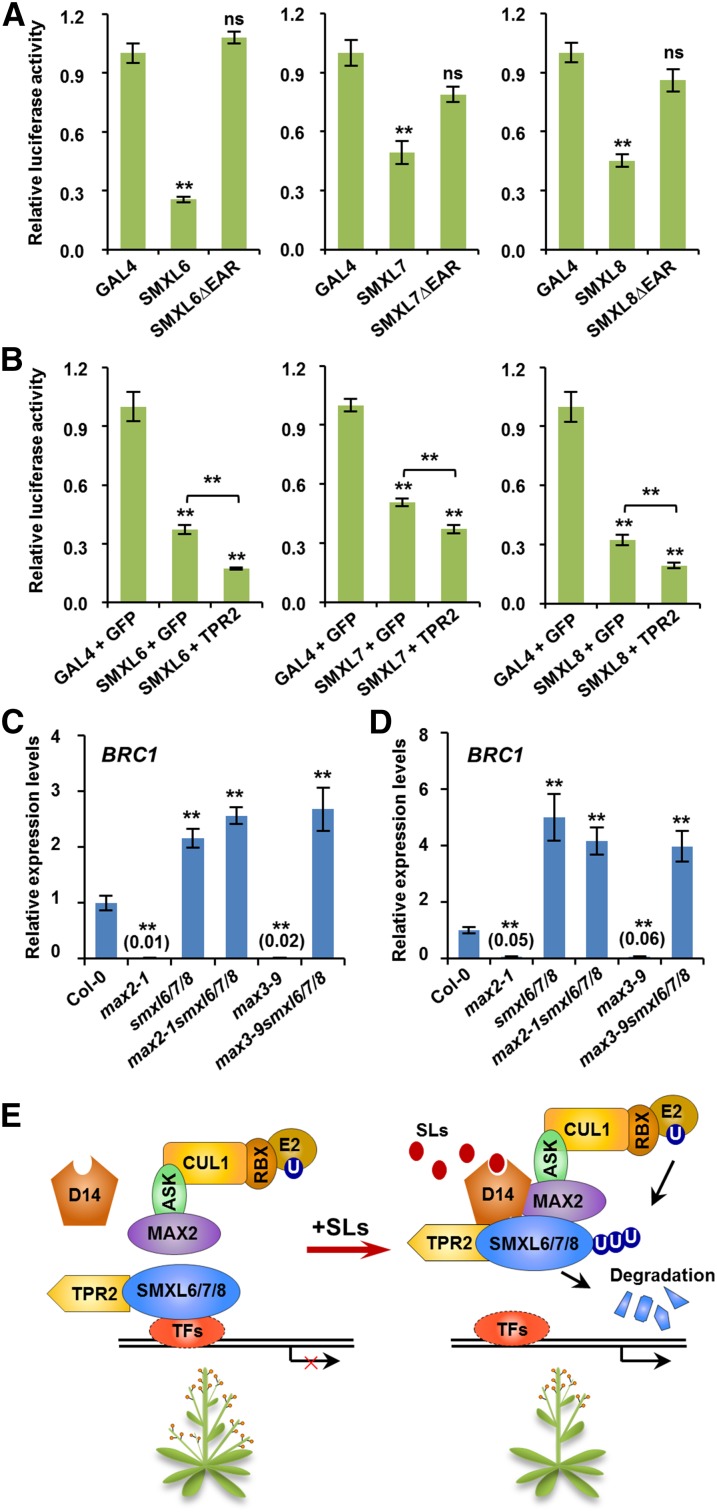Figure 9.
SMXL6, 7, and 8 Cooperate with TPR2 to Repress the Expression of SL-Responsive Genes.
(A) SMXL6, 7, and 8 show transcriptional repression activities in transient expression assays in Arabidopsis. Protoplasts were cotransformed with two plasmids (Supplemental Figure 8), one comprising a luciferase reporter with upstream enhancer sequence and the other encoding GAL4, a GAL4-SMXL fusion, or GAL4-SMXLΔEAR fusion. After 12 h of incubation, luciferase was assayed. Values are means ± se (n = 4); ns, no significant difference; **P < 0.01 determined by Student’s t test.
(B) The effects of TPR2 on transcriptional repression activities of SMXL6, 7, and 8 in Arabidopsis. Protoplasts were cotransformed with three plasmids (Supplemental Figure 8): one comprising the luciferase reporter, another encoding either GAL4 or GAL4-SMXL fusion, and the third either GFP (as a control) or TPR2. After 12 h of incubation, luciferase was assayed. Values are means ± se (n = 4); ns, no significant difference; **P < 0.01 determined by Student’s t test.
(C) and (D) Expression of BRC1 in nonelongated axillary buds of primary rosette (RI) branches (C) and secondary cauline (CII) branches (D) of Col-0 and the mutants indicated. Values are means ± se (n = 3 or 4); **P < 0.01 determined by Student’s t test.
(E) A model of the SL signaling complex in Arabidopsis that includes SL-dependent interaction of Arabidopsis D14 with both MAX2 and SMXL proteins, although the sequence in which these interactions occur is not known. It is not known if BRC1 is a direct or indirect target of this SL signaling mechanism. ASK, CUL1, RBX, and E2 are components of the ubiquitination complex. U, Ubiquitin; TFs, transcription factors (unidentified).

